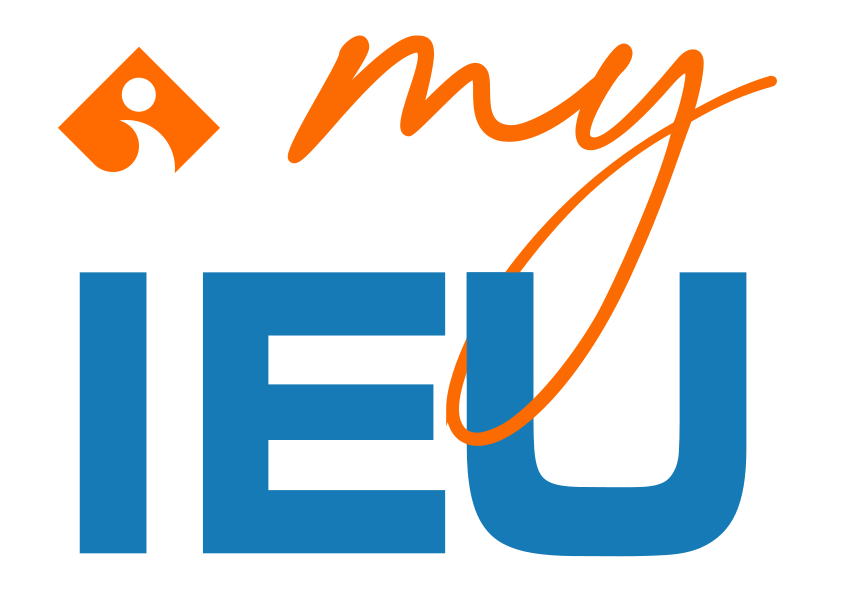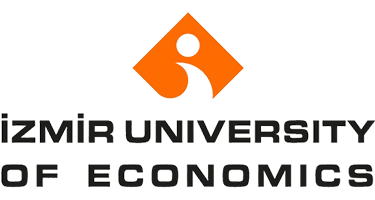STAT 503 | Course Introduction and Application Information
| Course Name |
Probability Theory
|
|
Code
|
Semester
|
Theory
(hour/week) |
Application/Lab
(hour/week) |
Local Credits
|
ECTS
|
|
STAT 503
|
Fall/Spring
|
3
|
0
|
3
|
7.5
|
| Prerequisites |
None
|
|||||
| Course Language |
English
|
|||||
| Course Type |
Elective
|
|||||
| Course Level |
Second Cycle
|
|||||
| Mode of Delivery | - | |||||
| Teaching Methods and Techniques of the Course | - | |||||
| National Occupation Classification | - | |||||
| Course Coordinator | - | |||||
| Course Lecturer(s) | ||||||
| Assistant(s) | ||||||
| Course Objectives | This course aims to make the students familiar with the basics of Probability Theory and its applications. |
| Learning Outcomes |
The students who succeeded in this course;
|
| Course Description | In this course, a short introduction to the combinatorial analysis is given. The axioms of probability theory and historical background is discussed. Random events, random variables as well as their basic characteristics are studied. Limit theorems for sums of independent random variables are also considered. |
| Related Sustainable Development Goals |
|
|
|
Core Courses | |
| Major Area Courses | ||
| Supportive Courses | ||
| Media and Management Skills Courses | ||
| Transferable Skill Courses |
WEEKLY SUBJECTS AND RELATED PREPARATION STUDIES
| Week | Subjects | Related Preparation |
| 1 | Sample space | "A First Course in Probabilty" by Sheldon Ross, Pearson, 9th edition, 2012. ISBN-13: 978-0321794772. 1:20. |
| 2 | Classical probability | "A First Course in Probabilty" by Sheldon Ross, Pearson, 9th edition, 2012. ISBN-13: 978-0321794772. 24:35. |
| 3 | İndependent events, conditional probability, total probability formula. | "A First Course in Probabilty" by Sheldon Ross, Pearson, 9th edition, 2012. ISBN-13: 978-0321794772. 64:87. |
| 4 | The basic notations for discrete random variables. | "A First Course in Probabilty" by Sheldon Ross, Pearson, 9th edition, 2012. ISBN-13: 978-0321794772. 127:137. |
| 5 | The Bernoulli, binomial, Poisson, geometric and negative binomial random variables. | "A First Course in Probabilty" by Sheldon Ross, Pearson, 9th edition, 2012. ISBN-13: 978-0321794772. 139:158. |
| 6 | The basic notations for continuous random variables. | "A First Course in Probabilty" by Sheldon Ross, Pearson, 9th edition, 2012. ISBN-13: 978-0321794772. 188:198. |
| 7 | The uniform and exponential random variables. The normal law | "A First Course in Probabilty" by Sheldon Ross, Pearson, 9th edition, 2012. ISBN-13: 978-0321794772. 198:206. |
| 8 | Midterm Exam | |
| 9 | Jointly distributed and multivariate random variables. | "A First Course in Probabilty" by Sheldon Ross, Pearson, 9th edition, 2012. ISBN-13: 978-0321794772. 239:260. |
| 10 | Sums of independent random variables. Convolution formula. | "A First Course in Probabilty" by Sheldon Ross, Pearson, 9th edition, 2012. ISBN-13: 978-0321794772. 261:270. |
| 11 | Order statistics. | "A First Course in Probabilty" by Sheldon Ross, Pearson, 9th edition, 2012. ISBN-13: 978-0321794772. 273:277. |
| 12 | Properties of expectation. Covariance, variance, correlation. | "A First Course in Probabilty" by Sheldon Ross, Pearson, 9th edition, 2012. ISBN-13: 978-0321794772. 304:340. |
| 13 | The moment generating functıon. | "A First Course in Probabilty" by Sheldon Ross, Pearson, 9th edition, 2012. ISBN-13: 978-0321794772. 361:371 |
| 14 | The central limit theorem and the law of large numbers. Other limit laws. | "A First Course in Probabilty" by Sheldon Ross, Pearson, 9th edition, 2012. ISBN-13: 978-0321794772. 400:418. |
| 15 | Semester Review | |
| 16 | Final Exam |
| Course Notes/Textbooks | "A First Course in Probabilty" by Sheldon Ross, Pearson, 9th edition, 2012. ISBN-13: 978-0321794772. |
| Suggested Readings/Materials | “Probability and Statistics for Engineers and Scientists” by Ronald Walpole, Raymond Myers, Sharon Myers, Keying Ye, Prentice Hall, 8th Edition, 2006. ISBN-13: 978-0131877115 |
EVALUATION SYSTEM
| Semester Activities | Number | Weigthing |
| Participation | ||
| Laboratory / Application | ||
| Field Work | ||
| Quizzes / Studio Critiques | ||
| Portfolio | ||
| Homework / Assignments |
1
|
10
|
| Presentation / Jury | ||
| Project | ||
| Seminar / Workshop | ||
| Oral Exams | ||
| Midterm |
1
|
40
|
| Final Exam |
1
|
50
|
| Total |
| Weighting of Semester Activities on the Final Grade |
2
|
50
|
| Weighting of End-of-Semester Activities on the Final Grade |
1
|
50
|
| Total |
ECTS / WORKLOAD TABLE
| Semester Activities | Number | Duration (Hours) | Workload |
|---|---|---|---|
| Theoretical Course Hours (Including exam week: 16 x total hours) |
16
|
3
|
48
|
| Laboratory / Application Hours (Including exam week: '.16.' x total hours) |
16
|
0
|
|
| Study Hours Out of Class |
14
|
5
|
70
|
| Field Work |
0
|
||
| Quizzes / Studio Critiques |
0
|
||
| Portfolio |
0
|
||
| Homework / Assignments |
1
|
17
|
17
|
| Presentation / Jury |
0
|
||
| Project |
0
|
||
| Seminar / Workshop |
0
|
||
| Oral Exam |
0
|
||
| Midterms |
1
|
40
|
40
|
| Final Exam |
1
|
50
|
50
|
| Total |
225
|
COURSE LEARNING OUTCOMES AND PROGRAM QUALIFICATIONS RELATIONSHIP
|
#
|
Program Competencies/Outcomes |
* Contribution Level
|
|||||
|
1
|
2
|
3
|
4
|
5
|
|||
| 1 | Accesses information in breadth and depth by conducting scientific research in Computer Engineering, evaluates, interprets and applies information. |
-
|
-
|
-
|
X
|
-
|
|
| 2 | Is well-informed about contemporary techniques and methods used in Computer Engineering and their limitations. |
-
|
-
|
X
|
-
|
-
|
|
| 3 | Uses scientific methods to complete and apply information from uncertain, limited or incomplete data, can combine and use information from different disciplines. |
-
|
-
|
-
|
X
|
-
|
|
| 4 | Is informed about new and upcoming applications in the field and learns them whenever necessary. |
-
|
-
|
-
|
-
|
X
|
|
| 5 | Defines and formulates problems related to Computer Engineering, develops methods to solve them and uses progressive methods in solutions. |
-
|
-
|
-
|
-
|
X
|
|
| 6 | Develops novel and/or original methods, designs complex systems or processes and develops progressive/alternative solutions in designs. |
-
|
-
|
-
|
X
|
-
|
|
| 7 | Designs and implements studies based on theory, experiments and modelling, analyses and resolves the complex problems that arise in this process. |
-
|
-
|
-
|
X
|
-
|
|
| 8 | Can work effectively in interdisciplinary teams as well as teams of the same discipline, can lead such teams and can develop approaches for resolving complex situations, can work independently and takes responsibility. |
-
|
-
|
X
|
-
|
-
|
|
| 9 | Engages in written and oral communication at least in Level B2 of the European Language Portfolio Global Scale. |
-
|
-
|
X
|
-
|
-
|
|
| 10 | Communicates the process and the results of his/her studies in national and international venues systematically, clearly and in written or oral form. |
-
|
-
|
X
|
-
|
-
|
|
| 11 | Is knowledgeable about the social, environmental, health, security and law implications of Computer Engineering applications, knows their project management and business applications, and is aware of their limitations in Computer Engineering applications. |
-
|
-
|
X
|
-
|
-
|
|
| 12 | Highly regards scientific and ethical values in data collection, interpretation, communication and in every professional activity. |
-
|
X
|
-
|
-
|
-
|
|
*1 Lowest, 2 Low, 3 Average, 4 High, 5 Highest

IZMIR UNIVERSITY OF ECONOMICS GÜZELBAHÇE CAMPUS
DetailsGLOBAL CAREER
As Izmir University of Economics transforms into a world-class university, it also raises successful young people with global competence.
More..CONTRIBUTION TO SCIENCE
Izmir University of Economics produces qualified knowledge and competent technologies.
More..VALUING PEOPLE
Izmir University of Economics sees producing social benefit as its reason for existence.
More..


